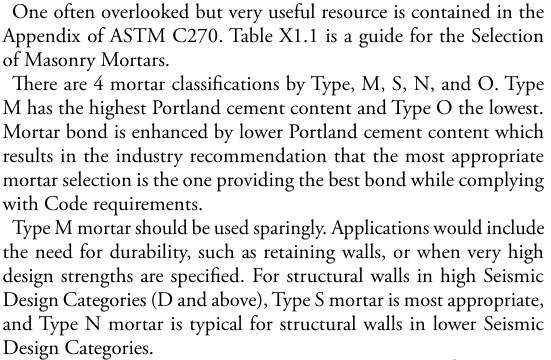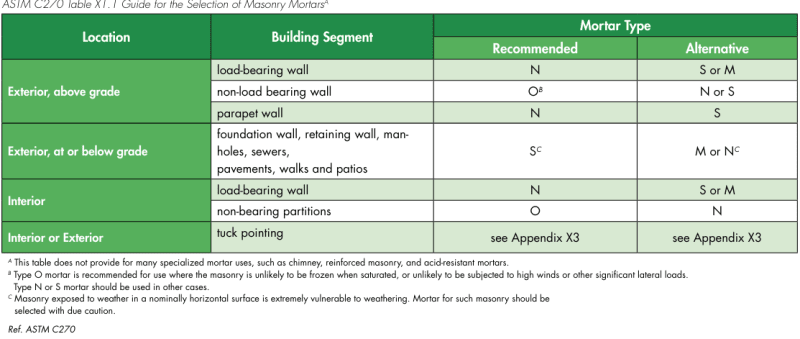Typically for CMU I just specify wall assembly compressive strength f'm on my structural drawings, which determines permissible combinations of block strength and mortar per TMS602-22 specification table 2.
But ASTM C270 and other sources such as the article below indicate an inverse correlation between portland content and bond strength/moisture permeability, and recommend specifying type N in exterior walls if structural design allows for the decreased allowable compressive strength.
International Masonry Institute has been pushing structural engineers to specify higher f'm, switching from default 1500psi to 2000psi or 2500psi, which seems to run somewhat counter to the push for type N mortar.
But ASTM C270 and other sources such as the article below indicate an inverse correlation between portland content and bond strength/moisture permeability, and recommend specifying type N in exterior walls if structural design allows for the decreased allowable compressive strength.
International Masonry Institute has been pushing structural engineers to specify higher f'm, switching from default 1500psi to 2000psi or 2500psi, which seems to run somewhat counter to the push for type N mortar.


